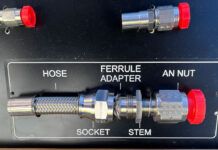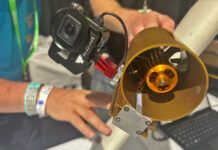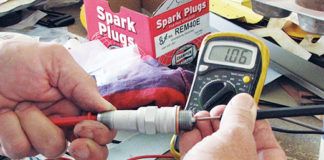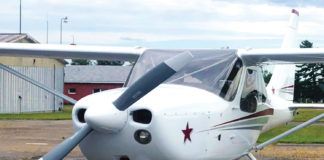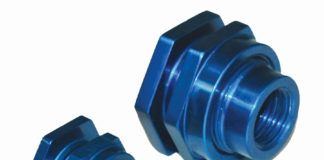You plan to build a plane, a design selected after you researched all the available selections suitable for the type of flying you plan to pursue. You know what you want in the panel, the instrumentation, avionics, radios and displays. The interior you want to install stands clear in your mind. You know of suitable shop space and a source for tools. Time to push the button.
Before you begin the project proper, you should have a plan to produce all those pennies needed to keep your project progressing. Some quick math confirms what you suspected: Using available cash flow to cover the cost means spending years accumulating enough money to purchase each airframe kit, then the firewall forward stuff and, finally, the panel. For many builders, thats fine. The purpose is to build at their leisure, and the calendar is not in control.
But the changing face of homebuilding reflects a new kind of results-oriented builder, and to complete an airplane project in a reasonable amount of time-or, more specifically, so that finances aren’t riding the brakes-you may well need financial aid in the form of a loan. On this point, you’re in luck. A variety of options may help builders clear the financial barriers and make their planes all they want them to be-within certain limitations.
Some obvious options might seem tempting, but viewed long term they hold little attraction and plenty of pitfalls. Lets look at using plastic from your wallet to finance the project. Experts in personal and aircraft finance alike shiver at the thought unless you have the means to pay off the balance monthly. Otherwise, the interest rates can be among the highest-even those with tantalizingly low initial rates can turn ugly over time.
When you think about it, anyone with the means to pay off credit cards monthly really has the means to just pay cash. But if thats what floats your frequent flyer points, well, its up to you.
Another option is that home equity you could tap. The bad thing about using a home-equity loan-a second mortgage, actually-is the prospect of losing your house should anything happen that causes you to default on the note. Better than a credit card, consultants say, but with other risks.
For those with the means (as in, the credit rating), a better strategy involves approaching the family banker for a signature loan. In essence, the financial institution believes you are good for the money and, based on credit history and past experience, it will lend you the bucks without security or collateral. The downside: typically shorter terms than the best loan option and possibly higher interest rates, both of which can dramatically increase the size of the monthly payment.
Buying the Collateral on Credit
From a variety of experts emerges the clear winner in the how-to-pay-for-the-project derby: a loan from an aviation-finance specialist based on your good credit and the project itself as collateral, or security, for the loan. Loans for new and pre-owned certificated aircraft work much the same way, with the asset financed serving as security for the loan. Lenders willing to work with kit builders, while few, also often offer an opportunity to refinance the finished aircraft for a longer term at lower interest rates.
There can be some hazards in how you approach financing your project that you should learn and avoid. For example, applying for multiple loans in hopes of leveraging competition toward a lower interest rate can work against you. Credit reporting bureaus will flag a persons credit upon receiving three or more inquiries.
Speaking of credit reports, absolutely do review yours before you start shopping for a loan. Scan the information for any errors or bad history that should no longer be presented and get it corrected. This can take time, so be proactive in checking (and, in the long run, protecting) your good credit rating.
Additionally, because applying for an aircraft loan (even one for a kit project) is different from borrowing for a new car, be prepared to supply more documents than you might expect. Typically, aircraft lenders want to see information verifying your financial status, which means recent years tax returns, both personal and business if you’re a business owner, and documentation on bank accounts and property you own. The lenders goal is to assure itself of your ability to pay; if demonstrably strong, it may qualify you for a lower interest rate.
After arming yourself with your credit report and financial documentation, its wise to shop, but resist submitting any credit applications until after you’ve satisfied yourself that (a) the lender writes notes for kit projects, (b) the range of interest rates and payment terms are acceptable, and (c) you’ve met or talked with a finance firm official who can tell you whether your loan will be approved. Limit your calls to firms that offer livable rates and terms. Otherwise, you could be setting yourself up for a financial fall.
Players in Kit Aircraft Financing
AirFleet Capital Inc. (www.airfleetcapital.com) of Leesburg, Virginia, offers its kit aircraft loans without encumbering the kit itself, instead offering a signature loan convertible to a regular aircraft loan upon completion of the project. This finance company requires a down payment of 20% to 30% on such loans with terms ranging from seven to 10 years. According to the company, $25,000 is its minimum loan.
Loans may be structured in up to four phases as the construction proceeds. With the maximum approved, the company provides the funds in stages with the clock starting anew at each stage. In addition to the down payment, AirFleet also requires an FAA registration certificate before writing the loan, which can be obtained at the start of a project. After completion, AirFleet offers terms as long as 20 years for those who wish to refinance the finished aircraft.
AirFleet doesn’t provide a guide to interest rates for these loans, because rates depend on a variety of variables, among them the amount sought, the term desired and the borrowers credit. But finance experts stress that todays interest rates are favorable for aircraft-sometimes as low as 6.75% for completed and manufactured aircraft, with building projects running at slightly higher rates.
AirFleet is also the official finance provider for the Experimental Aircraft Association. While not a requirement, EAA membership may prove beneficial to the borrower. Additional information is available at www.eaa.org.
Another player in the Experimental aircraft builder market is National Aircraft Finance Co., or NAFCO (www.airloans.com). NAFCO, which calls Lakeland, Florida, home, started doing kitbuilt aircraft loans in 1994. According to the company, NAFCO offers loans in two phases. The first is the airframe (empennage, fuselage and wings), and the second stage is firewall forward, which includes the engine, prop and avionics. Some insurance companies offer “builders coverage” for this phase of the loan. NAFCO also wants the builder to obtain an assigned “N” number registration for the aircraft.
NAFCO prefers to restrict its kit project financing to designs with at least 25 or more aircraft built and flying. A down payment of 10% to 20% is the standard at NAFCO, with lower interest rates available to those who make a larger down payment.
After You Finish Building
Your finance options broaden considerably after you’ve completed your project. As noted, both companies that offer kit project loans will also work with customers to refinance the completed aircraft. In fact, sources for loans on completed Experimental aircraft are much broader than sources for the projects themselves. So when the time comes, it could pay to shop again. Remember, however, that as
an existing customer, the original finance company may be your best bet.
Your completed aircraft may also continue to help you secure the finances you need years later. Most aircraft-loan specialists offer refinancing programs to cover the costs of long-term care and feeding requirements-even if you still owe on an existing note.
In essence, these companies simply write a new note that, if applicable, pays off the old note and provides the funds for the project. The loan will depend in part on the residual value of the plane and whether the value of the proposed upgrade would bring the airplane above and beyond the amount of the loan.
This brings us back to the concept of equity. If your airplane has a value of $50,000 and you owe $20,000, you have $30,000 in equity. Lets say you want to spend $20,000 to replace an engine and prop, which will increase the value of the airplane to $65,000. Not all of the cost will add to the equity; the airplane with this upgrade will have equity of $45,000. So borrowing $20,000 to cover the engine and prop upgrade brings the loan needed to $40,000. You have a more valuable airplane; the loan company gets a proven customer for a longer, more profitable period of time; and you still can see $5000 in equity in the airplane. Be sure to consult early with your loan company officers to determine what percentage of an upgrade they will finance. Be prepared with a list of what you plan to do, the costs in materials and labor, and a recent valuation of your aircraft.

